Are you looking for the best lat exercises? Staying fit doesn’t mean intense workouts or spending hours at the gym. Finding enjoyable activities is the main goal for “lazy girls”. They need low effort as well as effective exercises. They must take even much less time, effort, or equipment. These workouts are perfect for their movement from leisurely walks to fun dances. Maintaining a workout schedule is very flexible for lazy women. Enjoy the joy of fitness focusing on your overall well-being! This article is about the “Top 10 Best Lat Exercises For Lazy Girls!”. The following exercises are suitable for lat exercises:
1. Walking: Walking is easy and regarded as one of the best lat exercises. It doesn’t need any particular gear and can be done practically anywhere. Set a daily goal of at least 30 minutes. One of the easiest and most efficient exercises is walking. It has several positive health effects. Here are some walking-related details:
Cardiovascular Health: Walking is a heart-pumping, blood-circulating exercise that improves cardiovascular health. Walking regularly can help lower blood pressure. It improves cholesterol and cuts the risk of stroke and heart disease.
Weight management: Walking exercise quickly helps you burn calories and control your weight. Many variables, including topography, distance travelled, and speed, affect calories.
Stress Reduction: Walking has a relaxing, stress-relieving impact on both the body and the mind. It causes endorphins that elevate moods.
Bone and Joint Health: Weight-bearing exercises lower the risk of osteoporosis and enhance joint health. Such as indoor walking workouts. It is one of the best lat exercises that strengthens bones and muscles.
Better Posture and Balance: Walking strengthens the core muscles and stabilizes the body. It helps improve posture and balance.
Enhanced Energy: Walking regularly helps improve circulation and oxygen flow throughout the body. And it helps ward off exhaustion and increase energy levels.
Low-impact and accessible: Walking is a low-impact activity. It can be done at any place. People of all ages and fitness levels can do it. It also requires very little equipment. Besides, it has less pressure on the joints than high-impact exercises like running.
Versatility: It’s simple to adapt your walking regimen to your schedule and tastes. There are countless possibilities for walking. Whether you choose to do it in your neighborhood, on a treadmill at the gym, or outside in the great outdoors, it is best. Set your goal for at least 150 minutes of moderate-intensity aerobic activity per week. That is 30 minutes a day, five days a week to get the most from walking. Besides, even brief walks across the day can add up and contribute to your seeking health and well-being.
So put on your sneakers and start to improve your health! This is best lat exercises Yoga
2. Yoga: It doesn’t need a lot of room, is mild, and can be done at your own pace. There are different yoga mats on the market that are suitable for beginners.
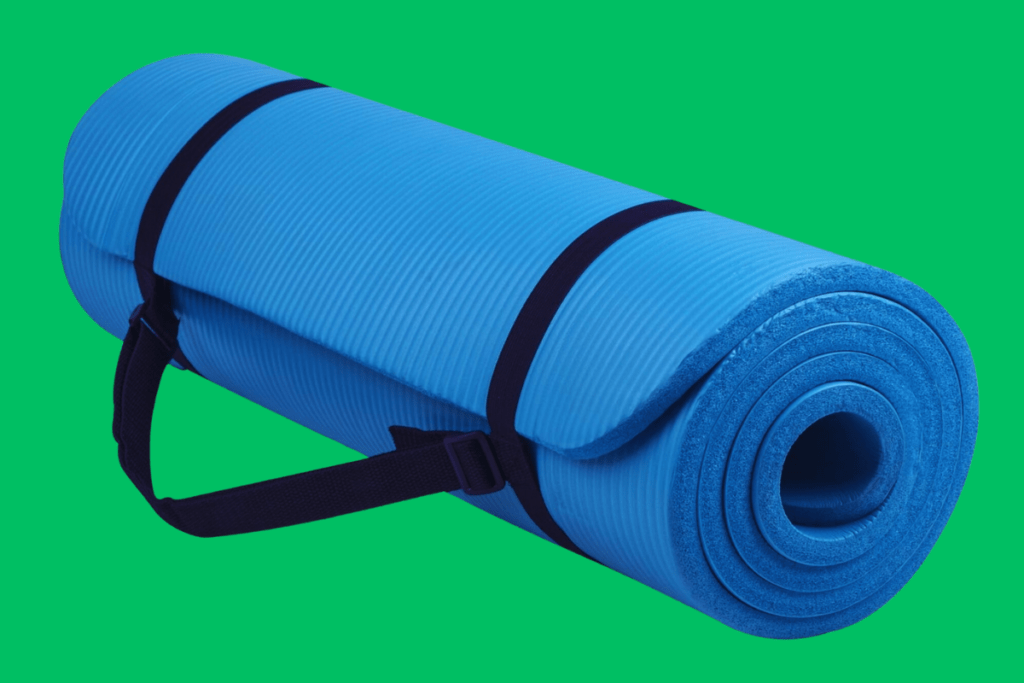
Yoga is a holistic discipline that has thousands of years of history and its roots in ancient India. It offers breathing exercises, relaxation methods, meditation, and physical postures. It supports general health and well-being. Tony Horton says, “The ground is where you find your strength, both physically and mentally.”
Here are some specifics of yoga:
Benefits for the body: Yoga offers a variety of asanas, or physical postures, that tone, stretch, and strengthen the muscles. Flexibility, balance, and posture can all be enhanced with regular practice. Additionally, other positions focus on particular body parts, like the legs, back, and core.
Benefits for the Mind: Yoga is well-known for its ability to improve mental health besides its physical benefits. Stress, anxiety, and sadness can be lessened with the breath or meditation. Yoga encourages mindfulness and awareness, promoting a sense of calm and inner peace.
Breath regulation (Pranayama): The techniques of Pranayama make up deliberate breath regulation. Yoga practitioners can improve their physical and emotional well-being through breathing exercises. The benefits of pranayama include mental calmness, heightened energy, and enhanced respiratory health.
Stress Reduction: Yoga can lower stress and encourage relaxation. Yoga practitioners seek to relieve mental and physical tension. So they practice asanas, pranayama, and meditation. It results in a greater well-being.
Spiritual Development: Yoga is not a religious practice. Thus, it has strong spiritual foundations in Buddhism, Hinduism, and other old traditions. Yoga offers possibilities for thinking and self-discovery. It makes a connection to a higher power or universal awareness. And for some practitioners, it works as a spiritual journey.
Reachable by All: Yoga is great for all. It adapts to any age, fitness level, or skill. There are yoga poses that can fit your requirements and ambitions.
Many styles of yoga exist. Each has its self focus and approach. Some popular styles include Hatha, Vinyasa, Ashtanga, Bikram, and Kundalini yoga. Each style offers a unique combination of physical postures, breathing techniques, and meditation.
3. Swimming: If you have access to a pool, swimming is a great full-body workout that’s easy on the joints. Swimming is a highly beneficial form of exercise. It engages the entire body and offers a wide range of physical and mental health benefits.

Here are some of the key benefits of swimming: best lat exercises
Full-Body Workout: Swimming works virtually every muscle group in the body. Including the arms, shoulders, back, core, hips and legs. It provides both cardiovascular exercise and resistance training. Then it helps to build strength, endurance, and muscle tone.
Low-Impact Exercise: People with cartilage damage, and joint pain can enjoy swimming. Because it is a moderate exercise for the joints. Water’s buoyancy lessens the impact on the joints. It enables a hassle-free, productive workout without the risk of injuries.
Improved Lung Function: Swimming requires controlled breathing techniques. It helps to improve lung capacity and respiratory function. The combination of aerobic exercise and breath control can affect lung health.
Weight Management: Swimming burns many calories. It’s an effective exercise for losing and managing weight. Water’s resistance makes you burn more calories than on land.
Stress Relief: Swimming can relax you. It reduces stress. Its meditative quality helps. The rhythm of swimming and the soothing water can calm the mind. It can also reduce tension and anxiety.
Improved Flexibility: Swimming uses a wide range of movements. They improve flexibility and the joints’ range of motion. Swimming stretches and lengthens muscles. It helps flexibility and prevents stiffness and injuries.
Better Mental Health: Swimming, like other exercises, boosts endorphins. They make you happy. Swimming can also boost self-confidence, improve mood, and enhance mental clarity and focus.
Social Interaction: Swimming can be a social activity when done in groups or with friends and family. Joining a swim club, participating in water aerobics classes, or simply swimming with others at a local pool can provide opportunities for social interaction and connection.
Life-Saving Skill: Learning to swim is not only a valuable form of exercise but also an essential life skill. Knowing how to swim can improve water safety and reduce the risk of drowning, making it an important skill for people of all ages to use.
4. Dancing: Whether it’s taking a dance class or just dancing around your room to your favorite songs, it’s a fun way to get moving. Dancing is not only a form of artistic expression but also a fantastic way to get moving and stay fit.

Here are some details about dancing and its benefits:
Calorie Burning: Dancing can burn many calories. It depends on the dance session’s intensity and duration. High-energy styles like Zumba or dance cardio can torch calories, aiding in weight loss and weight management.
Muscle Strength and Tone: Different dance styles engage various muscle groups, helping to strengthen and tone the body. For example, ballet strengthens the legs and core, while salsa can work the hips and arms. Over time, regular dancing can lead to improved muscle definition and endurance.
Flexibility and Range of Motion: Many dance movements involve stretching and reaching. It improves flexibility and range of motion in the joints. For example, emphasizes flexibility through movements like pliés and arabesques. Styles like contemporary dance encourage flexibility and growth.
Balance and Coordination: Dancing needs the body to work in sync. It tests balance, proprioception, and spatial awareness. Practicing dance steps and routines can improve balance and coordination over time. Sense of well-being.
Social Interaction: Dancing is often a social activity that brings people together. Joining a dance class, attending events, or dancing with friends offers ways to connect and build a community.
Mental Benefits: Dancing can boost brain function and cognition. Learning new dance routines is a challenge. It tests memory, focus, and quick thinking. It keeps the mind sharp and engaged.
Dancing is a creative way to express oneself through movement. Whether it’s improvising to music or choreographing a routine, dancing can be a deeply personal and fulfilling experience.
5. Pilates: Like yoga, Pilates focuses on strength, flexibility, and posture. Many exercises can be done lying down, which is perfect for lazy days.
Pilates is a form of exercise that focuses on core strength, flexibility, balance, and body awareness. Pilates was developed by Joseph Pilates in the early 20th century. It is now popular worldwide for its many health benefits. Here are some key aspects of Pilates:
Core Strength: Pilates builds a strong core. It targets the abdomen, lower back, hips, and buttocks. Many Pilates exercises focus on these muscles. They promote stability and good alignment.
Controlled Movements: One of the principles of Pilates is precision and control. Movements are slow and focused. This ensures proper form and alignment. This mindful approach helps develop body awareness and coordination.
Breath Awareness: Pilates emphasizes the importance of coordinated breathing with movement. Proper breathing techniques are part of the exercises. They boost oxygen flow, reduce tension, and promote relaxation.
Balance and Stability: Pilates exercises often involve unstable surfaces or difficult positions. They improve balance, stability, and proprioception (awareness of body position).
Posture Improvement: Pilates focuses on promoting good posture. It strengthens the muscles. It supports the spine and encourages proper alignment of the body. Improved posture can reduce back pain and enhance physical appearance.
6. Hiking: If you enjoy being outdoors, hiking is a great way to get some exercise while also enjoying nature. Hiking is a fantastic outdoor activity that offers many physical, mental, and emotional benefits. John F. Kennedy once said, “Nothing compares to the explorative pleasure of a bike ride.
Here’s a rundown of what makes hiking so great:
Physical Fitness: Hiking is a great cardio workout. It can boost your heart health and stamina. It also engages various muscle groups. Such as legs, glutes, core, and arms, helping to strengthen and tone your body.
Improved Mental Health: Spending time in nature has been shown to reduce stress, anxiety, and depression. Hiking helps you escape daily stresses. It immerses you in nature and brings peace.
Connection with Nature: Hiking lets you explore nature. It has lush forests, winding rivers, and rugged mountains. You can also enjoy scenic views. It allows you to appreciate the beauty of the outdoors and connect with the natural world.
Adventure: Hiking is an adventure. It lets you explore new trails, hidden gems, and stunning viewpoints. Whether you’re embarking on a short day hike or a multi-day trek, each outing offers a sense of discovery and adventure.
Hiking lets you unplug from tech and distractions. It helps you be present and practice mindfulness. The rhythm of your footsteps, the sounds of nature, and the sights along the trail can help you feel grounded and centreded.
Increased Vitamin D: Outdoors gives sunlight and it is a key source of vitamin D. It is very important for bones, immunity, and well-being.
Low Cost: Hiking is a low-cost activity compared to other forms of recreation. Aside from any necessary gear and permits, hiking trails are free to access. So make it an accessible and affordable way to stay active.
Hiking creates a sense of environmental stewardship. It inspires respect for nature. Many hikers become advocates for conservation. They want to protect our planet for future generations.
7. Cycling: If you have a bike, cycling is an excellent low-impact exercise that you can do at your own pace.
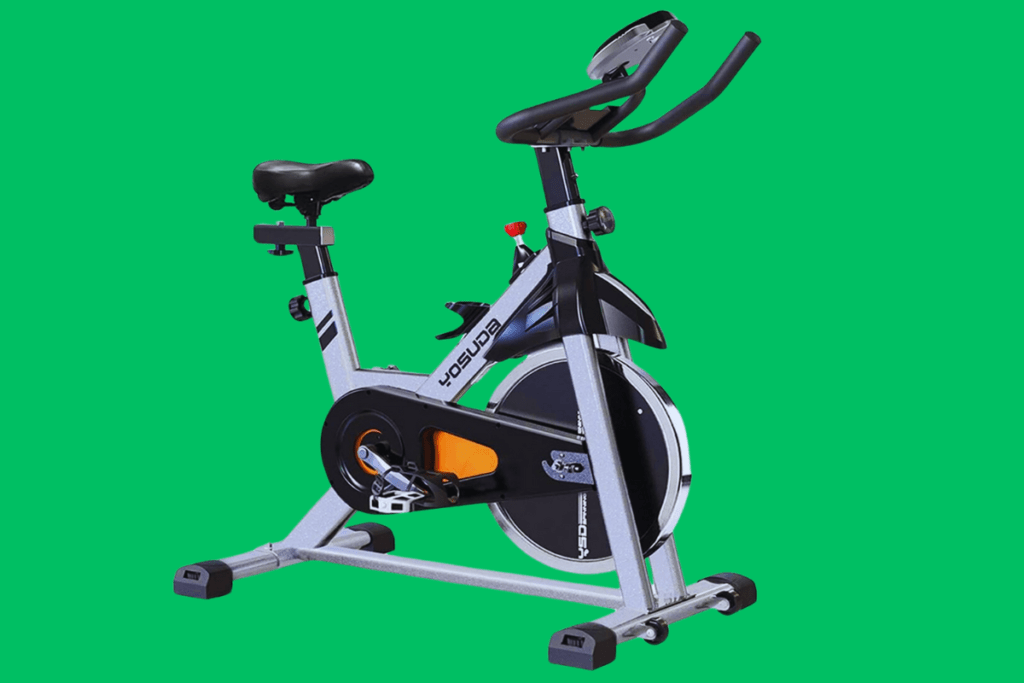
Cycling is a popular exercise and mode of transport. It has many health benefits. It is said, “Cycling is the perfect lazy girl workout. It blends movement with joy. You can glide through life and get fit!”
Here are some details about cycling and its benefits:
Cardiovascular Health: Cycling is a great aerobic exercise. It boosts your heart and blood flow. Regular cycling can boost heart health. It lowers blood pressure and reduces the risk of heart disease and stroke.
Muscle Strength and Tone: Cycling mainly targets the lower body muscles. These include the quads, hamstrings, calves, and glutes. It helps build strength and muscle tone improving lower body strength and endurance.
Low-Impact Exercise: Cycling is a low-impact exercise. It is gentle on the joints. So, it suits all ages and fitness levels. Unlike high-impact activities like running, cycling is easier on the knees, hips, and ankles. It reduces the risk of injury.
Weight Management: Cycling burns calories. It’s a great way to lose weight and manage it. Calories burned depend on the speed, duration, and intensity of cycling. But even leisurely cycling can burn calories.
Improved Mental Well-Being: Cycling helps mental health. It cuts stress, anxiety, and depression. The rhythm of cycling, the scenery, and the fresh air can calm the mind. They can also boost happiness and well-being.
Joint Mobility and Flexibility: Cycling’s repeated leg motion can help the hips, knees, and ankles. It improves flexibility and mobility. Regular cycling can help maintain the range of motion in these joints and prevent stiffness and pain.
Bone Health: Cycling is a weight-bearing exercise, which means it helps maintain and improve bone density. Regular cycling can reduce the risk of osteoporosis and improve bone strength, particularly in the lower body.
Convenience and Eco-Friendly: Cycling is a quick, cheap way to travel. It is better than driving or using public transport. It is also environmentally friendly, producing zero emissions and reducing carbon footprint.
Social Interaction: Cycling can be a social activity when done in groups or with friends and family. Joining a cycling club or group rides can build friendships and support.
8. Hip Bridges: Hip bridges are a great exercise for strengthening your glutes, hamstrings, and lower back. They can be performed anywhere and need no equipment, making them perfect for lazy girl leg workouts.
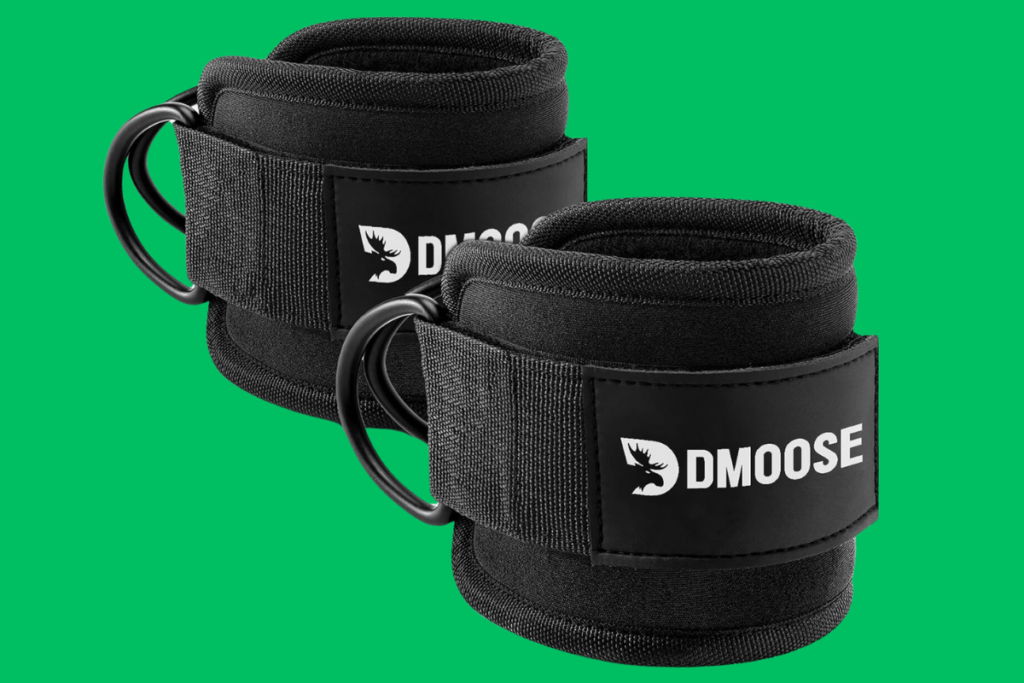
Benefits:
- Builds the glutes and hamstrings.
- Improves core stability.
- Can help relieve lower back tension.
- Great for lower-body conditioning.
Tips to keep in mind:
Keep your knees aligned with your feet and don’t let them splay outwards. Focus on squeezing your glutes at the top of the movement for greater effectiveness. To increase difficulty, try elevating your feet on a chair or adding a resistance band around your thighs.
Including hip bridges in your daily routine. You can boost your strength and stability. You can make a fantastic workout for a better day!
9. Tabata: It is a HIIT workout. It has short, intense exercise bursts, followed by brief rest periods. It was developed by Japanese scientist Dr. Izumi Tabata. It is known for its efficiency in burning fat and improving dedication.
You can follow this for Tabata:
- 20 seconds of all-out effort.
- 10 seconds of rest.
- Repeat this cycle for 8 rounds (totaling 4 minutes).
Benefits of Tabata:
Time-efficient: A complete workout can be done in just a few minutes, making it easy to fit into a busy schedule.
Burns Calories: The high intensity boosts metabolism, leading to more calories burned even after the workout is finished (afterburn effect).
Improves Endurance: Regular Tabata training can enhance both aerobic and anaerobic lazy fitness levels.
Versatile: You can use a variety of exercises (squats, burps, push-ups, etc.), making it easy to keep workouts fresh and engaging.
Minimal Equipment: Many Tabata workouts can be done with little to no equipment. It is perfect for home workouts.
10. Resistance Band Exercises: Resistance bands are inexpensive, portable, and versatile. You can use them for a variety of strength-training exercises targeting muscle groups.

Resistance bands are portable, affordable, and versatile tools. They are used for strength and cardio workouts. You can choose banded walks, rows, presses, and curls to target a variety of muscle groups. Resistance bands are versatile strength training tools. They’re lightweight and portable. They cost less than a month’s membership at most gyms. Thus, they can make effective strength training workouts for lazy girls.
We considered 24 sets of bands and tested 12. And found that the Bodylastic stackable tube resistance bands are the best. It would be the safest traditional tube-and-handle bands. If you’re looking for super bands for pull-up help or mini bands for physical therapy exercises
Thus, consider your flexibility & choice while choosing a perfect fitness workout.

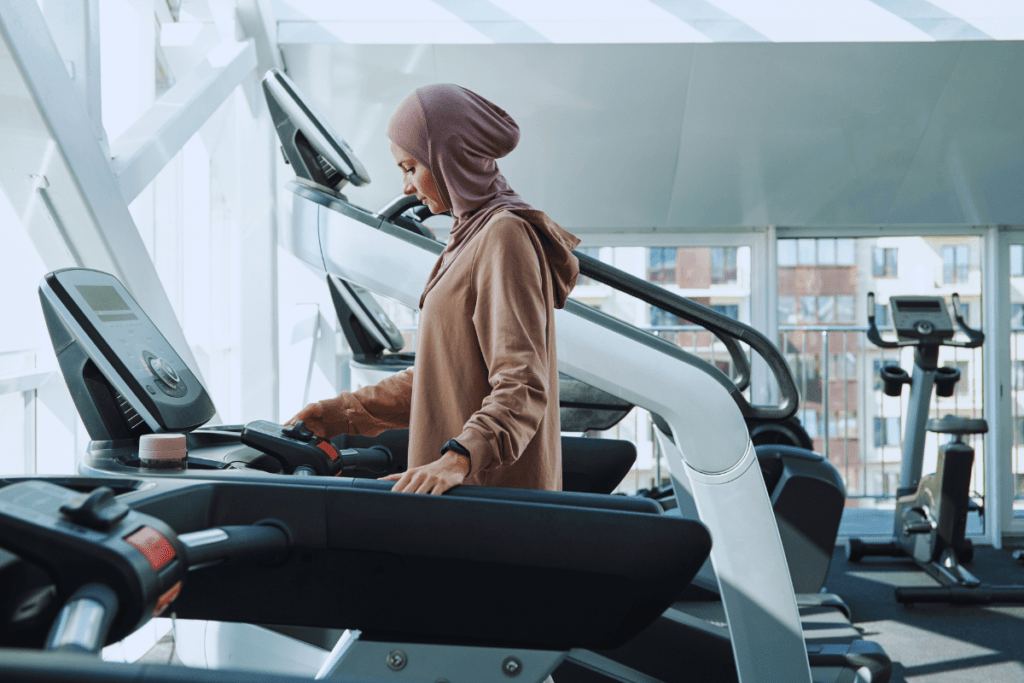
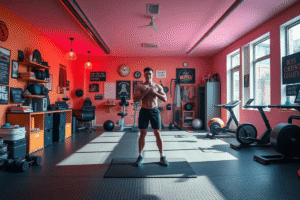

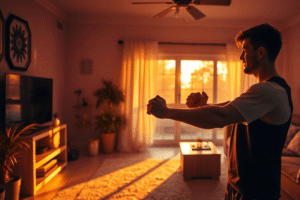
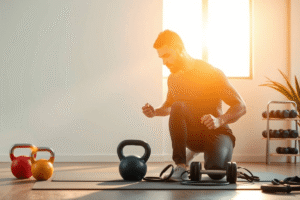

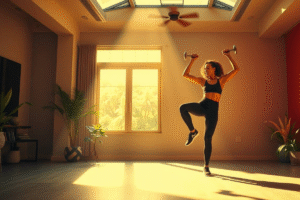
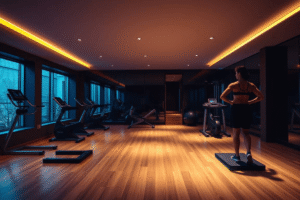
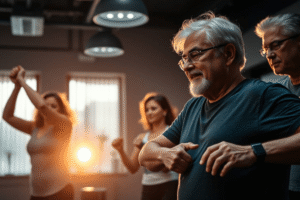
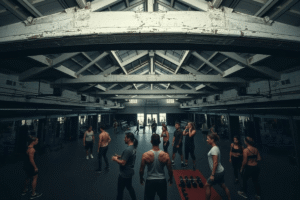
206 Comments
маркетплейс аккаунтов соцсетей маркетплейс для реселлеров
магазин аккаунтов marketplace-akkauntov-top.ru/
продать аккаунт услуги по продаже аккаунтов
платформа для покупки аккаунтов ploshadka-prodazha-akkauntov.ru/
перепродажа аккаунтов продать аккаунт
биржа аккаунтов перепродажа аккаунтов
магазин аккаунтов https://pokupka-akkauntov-online.ru/
Account Trading Account Sale
Marketplace for Ready-Made Accounts Account Buying Platform
Secure Account Purchasing Platform Account Buying Service
Account Catalog Account Buying Service
Website for Selling Accounts Verified Accounts for Sale
Account Acquisition Accounts market
Guaranteed Accounts Account Trading
Account Buying Platform Online Account Store
Find Accounts for Sale Account Trading Service
Guaranteed Accounts Online Account Store
Accounts market Account Trading Platform
account selling service buy and sell accounts
account market account selling platform
accounts for sale secure account purchasing platform
account sale account sale
accounts for sale socialaccountsdeal.com
account exchange service https://accountsmarketdiscount.com
website for buying accounts account acquisition
account market account marketplace
profitable account sales account acquisition
profitable account sales accounts marketplace
guaranteed accounts account exchange service
account trading platform website for buying accounts
account market secure account purchasing platform
sell pre-made account account trading platform
account trading platform sell account
account trading platform secure account purchasing platform
database of accounts for sale website for selling accounts
account selling service secure account purchasing platform
account market account catalog
secure account sales accounts for sale
account buying service https://sale-social-accounts.org
account trading platform gaming account marketplace
gaming account marketplace account market
account store accounts market
secure account purchasing platform sell pre-made account
ready-made accounts for sale buy account
account exchange service https://accounts-offer.org
account store https://accounts-marketplace.xyz
account selling service https://buy-best-accounts.org/
buy accounts https://social-accounts-marketplaces.live/
account trading service https://accounts-marketplace.live
sell pre-made account https://social-accounts-marketplace.xyz
account buying platform https://buy-accounts.space
buy accounts https://buy-accounts-shop.pro
account selling service https://social-accounts-marketplace.live
account marketplace https://buy-accounts.live
sell accounts https://accounts-marketplace.online
sell account accounts marketplace
магазин аккаунтов https://akkaunty-na-prodazhu.pro/
купить аккаунт https://rynok-akkauntov.top/
покупка аккаунтов https://kupit-akkaunt.xyz
продажа аккаунтов https://akkaunt-magazin.online/
магазин аккаунтов https://akkaunty-market.live
покупка аккаунтов kupit-akkaunty-market.xyz
покупка аккаунтов https://akkaunty-optom.live
магазин аккаунтов https://online-akkaunty-magazin.xyz
продать аккаунт https://akkaunty-dlya-prodazhi.pro
биржа аккаунтов kupit-akkaunt.online
cheap facebook account https://buy-adsaccounts.work
buy old facebook account for ads buy facebook accounts
buy facebook old accounts buy old facebook account for ads
facebook ad accounts for sale buy facebook old accounts
cheap facebook account buy facebook accounts cheap
buying facebook accounts https://buy-ads-account.work
facebook ad account for sale https://ad-account-for-sale.top
buy a facebook ad account https://buy-ad-account.click
buy aged facebook ads accounts buy facebook profiles
buy google adwords account sell google ads account
buy google adwords accounts buy google ads invoice account
facebook account buy buy facebook ads manager
google ads agency accounts buy aged google ads account
google ads accounts google ads account buy
buy google ads agency account https://buy-ads-invoice-account.top
buy google ad threshold account https://buy-account-ads.work
buy aged google ads accounts adwords account for sale
google ads account buy https://sell-ads-account.click
buy aged google ads account https://ads-agency-account-buy.click
buy facebook verified business account https://buy-business-manager.org
buy google ads sell google ads account
facebook bm account buy facebook bm
facebook bm buy https://buy-business-manager-acc.org/
facebook bm buy buy-verified-business-manager-account.org
buy bm facebook buy-verified-business-manager.org
verified bm for sale buy fb bm
buy business manager facebook https://buy-business-manager-verified.org/
facebook bm for sale https://buy-bm.org
facebook business account for sale verified-business-manager-for-sale.org
buy fb business manager buy verified bm
buy tiktok ads https://buy-tiktok-ads-account.org
buy tiktok ads https://tiktok-ads-account-buy.org
tiktok ads account buy https://tiktok-ads-account-for-sale.org
buy tiktok ads accounts https://tiktok-agency-account-for-sale.org
tiktok agency account for sale https://buy-tiktok-ad-account.org
tiktok agency account for sale https://buy-tiktok-ads-accounts.org
tiktok agency account for sale https://buy-tiktok-business-account.org
tiktok ads account buy https://buy-tiktok-ads.org
tiktok agency account for sale https://tiktok-ads-agency-account.org
¡Saludos, estrategas del desafío !
Casino sin licencia en EspaГ±a sin lГmite de depГіsito – https://casinossinlicenciaenespana.es/ casinos sin licencia espaГ±a
¡Que vivas triunfos extraordinarios !
¡Saludos, amantes del entretenimiento !
Casinosextranjerosenespana.es – SelecciГіn experta – https://www.casinosextranjerosenespana.es/ п»їcasinos online extranjeros
¡Que vivas increíbles jugadas excepcionales !
¡Hola, participantes del desafío !
Casino fuera de EspaГ±a que acepta PayPal – https://www.casinoonlinefueradeespanol.xyz/ casinos fuera de espaГ±a
¡Que disfrutes de asombrosas momentos memorables !
¡Hola, aficionados a las apuestas!
Casinos sin licencia con soporte rГЎpido – http://www.casinossinlicenciaespana.es/ casinos no regulados
¡Que experimentes oportunidades únicas !
¡Saludos, visitantes de plataformas de apuestas !
Apuesta sin riesgo en casinos online extranjeros – https://casinoextranjerosenespana.es/# casinos extranjeros
¡Que disfrutes de recompensas increíbles !
¡Saludos, entusiastas de la aventura !
casino online extranjero con licencia internacional – https://casinosextranjero.es/# п»їcasinos online extranjeros
¡Que vivas increíbles victorias épicas !
¡Bienvenidos, participantes de emociones !
Casino fuera de EspaГ±a con condiciones flexibles – https://www.casinoporfuera.guru/ п»їcasino fuera de espaГ±a
¡Que disfrutes de maravillosas movidas brillantes !
¡Hola, aventureros de la suerte !
casinoextranjero.es – compara y juega con ventajas – п»їhttps://casinoextranjero.es/ casinoextranjero.es
¡Que vivas giros exitosos !
¡Saludos, descubridores de tesoros!
casino fuera de EspaГ±a con RTP personalizado – п»їhttps://casinosonlinefueraespanol.xyz/ п»їcasino fuera de espaГ±a
¡Que disfrutes de éxitos sobresalientes !
¡Hola, jugadores expertos !
Casino online extranjero con opciones de recarga – https://www.casinosextranjerosdeespana.es/# casinosextranjerosdeespana.es
¡Que vivas increíbles instantes únicos !
¡Bienvenidos, usuarios de sitios de azar !
casinofueraespanol.xyz: todo lo que buscas en apuestas – https://www.casinofueraespanol.xyz/ casino por fuera
¡Que vivas increíbles logros extraordinarios !
¡Saludos, amantes del entretenimiento y la adrenalina !
Mejores casinos online extranjeros para tragamonedas – https://casinoextranjerosdeespana.es/# mejores casinos online extranjeros
¡Que experimentes maravillosas triunfos inolvidables !
?Hola, fanaticos del entretenimiento !
Casino fuera de EspaГ±a con licencias internacionales – https://www.casinosonlinefueradeespanol.xyz/ casinosonlinefueradeespanol
?Que disfrutes de asombrosas movidas destacadas !
Hello advocates of well-being !
Air Purifier Smoke – Top Rated in 2025 – п»їhttps://bestairpurifierforcigarettesmoke.guru/ best purifier for smoke
May you experience remarkable immaculate environments !
¡Hola, seguidores del entretenimiento !
Casinos sin registro con mГ©todos de pago rГЎpidos – https://casinosinlicenciaespana.xyz/# casinos sin licencia espaГ±a
¡Que vivas increíbles jackpots impresionantes!
¡Saludos, apasionados del ocio y la adrenalina !
Casino sin licencia sin regulaciГіn de la DGOJ – https://audio-factory.es/ casinos sin registro
¡Que disfrutes de asombrosas premios extraordinarios !
¡Bienvenidos, exploradores de posibilidades !
Casinos sin registro y verificaciГіn flexible – http://www.mejores-casinosespana.es/ mejores casinos sin licencia en espaГ±a
¡Que experimentes maravillosas triunfos legendarios !
¡Saludos, entusiastas de grandes logros !
Casino sin licencia espaГ±ola sin restricciones legales – https://www.emausong.es/ Emausong.es
¡Que disfrutes de increíbles jugadas impresionantes !
Greetings, fans of the absurd !
10 funniest jokes for adults no filter – http://jokesforadults.guru/ jokes for adults
May you enjoy incredible unique witticisms !
¡Saludos, buscadores de tesoros escondidos !
Casino online con bono de bienvenida ahora – http://bono.sindepositoespana.guru/# casino online con bono de bienvenida
¡Que disfrutes de asombrosas botes sorprendentes!
amoxil price – buy cheap generic amoxicillin amoxil uk
buy amoxicillin no prescription – comba moxi cheap amoxicillin online
how to get fluconazole without a prescription – https://gpdifluca.com/ how to buy forcan
buy forcan without prescription – buy fluconazole 100mg without prescription forcan online order
lexapro pills – https://escitapro.com/# purchase escitalopram pill
escitalopram 10mg drug – https://escitapro.com/ lexapro generic
buy cenforce no prescription – buy cenforce 100mg pills cenforce generic
buy cenforce 50mg without prescription – https://cenforcers.com/# cenforce 50mg without prescription
Greetings, cheer chasers !
п»їIf you’re looking for something fun but appropriate, adult jokes clean can give you that perfect balance. These jokes keep it silly without being offensive. Ideal for laughing with friends or coworkers without crossing any lines.
jokes for adults is always a reliable source of laughter in every situation. [url=https://adultjokesclean.guru/]jokesforadults.guru[/url] They lighten even the dullest conversations. You’ll be glad you remembered it.
Top Trending jokes for adults Right Now – https://adultjokesclean.guru/# joke of the day for adults
May you enjoy incredible brilliant burns !
cialis las vegas – https://ciltadgn.com/# what happens if a woman takes cialis
cialis without a doctor prescription canada – https://ciltadgn.com/# cialis and dapoxetime tabs in usa
buying fb accounts purchase ready-made accounts account sale
facebook ads accounts sell accounts find accounts for sale
cialis over the counter usa – tadalafil vidalista liquid tadalafil research chemical
generic cialis available in canada – https://strongtadafl.com/# combitic global caplet pvt ltd tadalafil
zantac canada – on this site buy ranitidine 300mg generic
100 mg of sildenafil – viagra pfizer 50 mg online how to buy viagra or cialis
viagra half pill – https://strongvpls.com/ 100 mg sildenafil price
I’ll certainly bring to read more. buy lasix diuretic
More content pieces like this would insinuate the web better. furosemide without prescription
¿Hola visitantes del casino ?
Los sistemas de seguridad en casas extranjeras son tan avanzados como en los regulados, con cifrado de Гєltima generaciГіn.apuestas fuera de espaГ±aAsГ se protege la informaciГіn y los fondos del usuario.
Casas de apuestas extranjeras permiten automatizar ciertas jugadas o patrones con herramientas de IA. Esto es ideal para quienes prefieren estrategias basadas en datos. Y ayuda a optimizar cada sesiГіn sin intervenciГіn manual constante.
Casas de apuestas fuera de espaГ±a con soporte multilingГјe y seguro – п»їhttps://casasdeapuestasfueradeespana.guru/
¡Que disfrutes de enormes logros !
With thanks. Loads of expertise! https://gnolvade.com/
This is the kind of glad I have reading. brand nolvadex
Thanks on putting this up. It’s okay done. https://ursxdol.com/clomid-for-sale-50-mg/
This is a keynote which is in to my fundamentals… Many thanks! Faithfully where can I find the phone details for questions? https://ursxdol.com/augmentin-amoxiclav-pill/
I’ll certainly carry back to skim more. https://prohnrg.com/product/get-allopurinol-pills/
Thanks towards putting this up. It’s well done. https://prohnrg.com/product/atenolol-50-mg-online/
This is a theme which is in to my heart… Many thanks! Faithfully where can I find the connection details for questions? https://aranitidine.com/fr/ivermectine-en-france/
I am in truth enchant‚e ‘ to glitter at this blog posts which consists of tons of profitable facts, thanks object of providing such data. this
Greetings to all risk lovers !
With 1xbet nigeria registration, players can choose odds formats like fractional or decimal. [url=http://1xbetregistrationinnigeria.com/]1xbet ng login registration online[/url] Nigerian users can switch language preferences anytime. This flexibility makes 1xbet nigeria registration appealing to a wide audience.
The updated 1xbet ng registration page is user-friendly and mobile-optimized. Nigerians registering today can choose from over 100 deposit methods. All major betting features unlock right after completing 1xbet ng registration.
Verified signups through 1xbet ng registration form – 1xbetregistrationinnigeria.com
Hope you enjoy amazing payouts !
Hello to all wagering enthusiasts!
Accessing your account is easy with the 1xbet login registration nigeria method. You simply log in with your phone or email and password. [url=https://1xbetnigeriaregistrationonline.com/#]1xbet registration in nigeria[/url] The system is designed for Nigerian users, making it smooth and secure.
The 1xbet registration in nigeria is even easier with promo codes that give you a bonus. You just enter the code during sign-up. It’s a great way to start with extra funds.
Tips for easy 1xbet nigeria login registration experience – https://www.1xbetnigeriaregistrationonline.com/#
Enjoy fantastic cashouts !
I couldn’t resist commenting. Profoundly written! https://ondactone.com/simvastatin/
More peace pieces like this would create the интернет better. https://ondactone.com/spironolactone/
Warm greetings to all fortune players !
Using 1xbet Nigeria registration online, you can choose between one-click signup or social media options. It’s designed to minimize hassle and maximize your time playing. [url=1xbet-nigeria-registration-online.com]1xbet login registration nigeria[/url]. The 1xbet registration in Nigeria is perfect for first-timers.
1xbet ng login registration online ensures that players can sign up and log in without delay. The intuitive interface guides you step by step. Once your 1xbet Nigeria login registration is complete, you’ll have full access to sports, casino, and bonuses.
Learn how 1xbet Nigeria login registration can improve security – 1xbet-nigeria-registration-online.com
Hoping you hit amazing grand wins !
More posts like this would make the online elbow-room more useful.
https://proisotrepl.com/product/cyclobenzaprine/
More articles like this would frame the blogosphere richer.
warfarin pills
The thoroughness in this piece is noteworthy. https://dr.xiaoyou.org/apps/vg/xgo.php?t=url&url=https://www.storeboard.com/xpregain
This is the compassionate of scribble literary works I positively appreciate. http://zqykj.cn/bbs/home.php?mod=space&uid=302442
More delight pieces like this would insinuate the web better. http://forum.ttpforum.de/member.php?action=profile&uid=424438
¡Un cordial saludo a todos los entusiastas del juego !
Los casino europa ofrecen una experiencia de juego segura y variada. [url=п»їhttps://casinosonlineeuropeos.xyz/]mejores casinos en linea[/url] Muchos jugadores prefieren casinosonlineeuropeos.xyz por sus bonos atractivos y soporte en varios idiomas. Un los mejores casinos online garantiza retiros rГЎpidos y mГ©todos de pago confiables.
Los casino europeo ofrecen una experiencia de juego segura y variada. Muchos jugadores prefieren casino online europa por sus bonos atractivos y soporte en varios idiomas. Un euro casino online garantiza retiros rГЎpidos y mГ©todos de pago confiables.
Mejores casinos con juegos exclusivos y bonos sin depГіsito – http://casinosonlineeuropeos.xyz/#
¡Que goces de increíbles victorias !
?Mis calidos augurios para todos los arquitectos de la suerte !
Jugar en un casino online europeo garantiza pagos rГЎpidos y transparentes. [url=http://casinoonlineeuropeo.blogspot.com/#][/url] Los casinos europeos priorizan la seguridad del usuario. Los mejores casinos online ofrecen jackpots progresivos.
El casinoonlineeuropeo.blogspot.com publica reseГ±as actualizadas. En casinoonlineeuropeo.blogspot.com puedes encontrar comparativas Гєtiles. El casino europa tiene programas VIP con recompensas Гєnicas.
Casinos europeos online: los mГЎs populares – http://casinoonlineeuropeo.blogspot.com/
?Que goces de excepcionales botes!
casino online europa
¡Mis mejores deseos a todos los conquistadores de la fortuna !
Cuando usas casinos online fuera de espaГ±a tienes a mano promociones diarias con buen retorno y pagos rГЎpidos sin complicaciones. [url=http://casinosonlineinternacionales.guru/]casinos online extranjeros[/url] Los operadores internacionales proporcionan atenciГіn al cliente 24/7 y versiones demo sin registro. Por eso la relaciГіn entre riesgo y recompensa es mГЎs favorable.
Al apostar en casino fuera de espaГ±a tienes a mano promociones diarias con buen retorno y proveedores de prestigio internacional. Los sitios confiables habilitan verificaciГіn ligera y rГЎpida y versiones demo sin registro. AsГ tu banca rinde mГЎs y las sesiones fluyen mejor.
Casino online internacional con soporte 24 horas – http://casinosonlineinternacionales.guru/#
¡Que disfrutes de extraordinarias jackpots!
Envio mis saludos a todos los aliados eternos del casino !
En https://casinosinlicenciaespana.blogspot.com encuentras reseГ±as objetivas sobre las mejores opciones. AsГ puedes elegir sin miedo a equivocarte. [url=http://casinosinlicenciaespana.blogspot.com/][/url] Cada casino sin licencia tiene sus propias ventajas.
Los casinos no regulados actualizan sus promociones mГЎs a menudo que los regulados. Esto significa mГЎs bonos y mГЎs oportunidades de ganar. Por eso, un casino online sin licencia resulta tan atractivo.
Casinos sin registro para apuestas mГіviles – п»їhttps://casinoonlineeuropeo.blogspot.com/
Que disfrutes de increibles juegos !
casinos sin licencia en espaГ±a
buy forxiga pills for sale – https://janozin.com/# forxiga 10 mg pills
dapagliflozin 10mg ca – https://janozin.com/ forxiga cost
orlistat cheap – buy generic xenical over the counter oral xenical 60mg
xenical over the counter – where to buy orlistat without a prescription buy orlistat online cheap
¡Mis más cordiales saludos a todos los estrategas del juego !
La experiencia de jugar en casino sin licencia en espaГ±a es Гєnica, llena de adrenalina y sin restricciones molestas. [url=п»їhttps://casinossinlicencia.xyz/][/url] Cada dГa mГЎs personas confГan en casino sin licencia en espaГ±a para disfrutar de apuestas rГЎpidas y seguras. El atractivo de casino sin licencia en espaГ±a estГЎ en sus bonos generosos y la ausencia de burocracia.
El atractivo de casinos sin registro estГЎ en sus bonos generosos y la ausencia de burocracia. Para los que aman la discreciГіn, casinos sin registro es la opciГіn ideal para jugar sin preocuparte. Si quieres sentir la verdadera emociГіn, casinos sin registro es el camino que no te decepcionarГЎ.
Vive la emociГіn en casinos sin licencia sin lГmites ni fronteras – п»їhttps://casinossinlicencia.xyz/
¡Que aproveches magníficas botes acumulados!
Thanks recompense sharing. It’s acme quality. http://3ak.cn/home.php?mod=space&uid=230368
Thanks on putting this up. It’s understandably done. http://bbs.51pinzhi.cn/home.php?mod=space&uid=7113338
Saludo cordialmente a todos los fanaticos de las tragamonedas !
Las casasdeapuestasextranjeras.xyz ofrecen a los jugadores espaГ±oles mГЎs libertad que las reguladas. Muchos usuarios eligen casasdeapuestasextranjeras.xyz porque permiten mejores cuotas y mГЎs promociones. [url=п»їhttps://casasdeapuestasextranjeras.xyz/][/url] AdemГЎs, registrarse en casasdeapuestasextranjeras.xyz suele ser rГЎpido y sencillo.
Las broker apuestas deportivas ofrecen a los jugadores espaГ±oles mГЎs libertad que las reguladas. Muchos usuarios eligen broker apuestas deportivas porque permiten mejores cuotas y mГЎs promociones. AdemГЎs, registrarse en broker apuestas deportivas suele ser rГЎpido y sencillo.
Todo lo que debes saber sobre casas de apuestas deportivas internacion – http://casasdeapuestasextranjeras.xyz/#
Ojala disfrutes de increibles recompensas !
casas apuestas extranjeras
Un afectuoso saludo para todos los apasionados del riesgo !
Muchos jugadores buscan 100 gratis spins porque ofrece una forma segura y divertida de empezar sin arriesgar dinero. 100 giros gratis Gracias a 100 gratis spins, puedes probar diferentes tragamonedas y juegos en vivo sin preocuparte por el depГіsito inicial. Las plataformas de casino online que incluyen 100 gratis spins suelen atraer tanto a principiantes como a expertos.
Las plataformas de casino online que incluyen 100 gratis spins suelen atraer tanto a principiantes como a expertos. Muchos jugadores buscan 100 gratis spins porque ofrece una forma segura y divertida de empezar sin arriesgar dinero. Gracias a 100 gratis spins, puedes probar diferentes tragamonedas y juegos en vivo sin preocuparte por el depГіsito inicial.
giros gratis sin depГіsito espaГ±a legal en EspaГ±a – п»їhttps://100girosgratis.guru/
Que tengas la suerte de gozar de increibles vueltas !
giros gratis por registro sin depГіsito
Saludo cordialmente a todos los jugadores de casino !
Los jugadores pueden aprovechar giros gratis por registro sin depГіsito para comenzar a jugar sin riesgo. [url=http://50girosgratissindeposito.xyz/][/url] Muchos operadores ofrecen 50 giros gratis como parte de su bienvenida. AdemГЎs, en sitios como 50 tiradas gratis encuentras promociones actualizadas cada dГa.
Los jugadores pueden aprovechar giros gratis por registro sin depГіsito para comenzar a jugar sin riesgo. Muchos operadores ofrecen 50 giros gratis como parte de su bienvenida. AdemГЎs, en sitios como 50 tiradas gratis encuentras promociones actualizadas cada dГa.
Casino online ofrece giros gratis sin depГіsito EspaГ±a exclusivos – http://50girosgratissindeposito.xyz/#
Deseo que vivas increibles triunfos !
п»їgiros gratis sin depГіsito espaГ±a
Un afectuoso saludo para todos los ganadores de premios!
Disfruta de la promociГіn casino 10 euros gratis para empezar a jugar sin riesgos y con mГЎs emociГіn desde el inicio. [url=http://10eurosgratissindepositocasinoes.xyz/#][/url]. Disfruta de la promociГіn 10 euros gratis sin depГіsito casino para empezar a jugar sin riesgos y con mГЎs emociГіn desde el inicio. Disfruta de la promociГіn suertia 10 euros gratis para empezar a jugar sin riesgos y con mГЎs emociГіn desde el inicio.
Disfruta de la promociГіn 10 euros gratis sin depГіsito casino para empezar a jugar sin riesgos y con mГЎs emociГіn desde el inicio. Disfruta de la promociГіn 10 euros gratis sin deposito para empezar a jugar sin riesgos y con mГЎs emociГіn desde el inicio. Disfruta de la promociГіn suertia 10 euros gratis para empezar a jugar sin riesgos y con mГЎs emociГіn desde el inicio.
Nueva promo activa: 10 euros gratis sin deposito casino sin depГіsito i – п»їhttps://10eurosgratissindepositocasinoes.xyz/
Que tengas la fortuna de disfrutar de increibles apuestas !
10 euros gratis sin deposito casino
A warm greeting to all the treasure seekers !
The casino online greek attracts players with generous bonuses and modern features. [url=http://newonlinecasinogreece.guru/#][/url] In comparison, the new casinos stands out by offering fast withdrawals and local support. Many users prefer the online casino ОµО»О»О±ОґО± because of its wide selection of slots and live games.
The online casino ОµО»О»О±ОґО± attracts players with generous bonuses and modern features. In comparison, the casino online greek stands out by offering fast withdrawals and local support. Many users prefer the ОґО№О±ОґО№ОєП„П…О±ОєО¬ ОєО±О¶ОЇОЅОї because of its wide selection of slots and live games.
О ПЃОїПѓП†ОїПЃОП‚ ОєО±О»П‰ПѓОїПЃОЇПѓОјО±П„ОїП‚ ПѓП„Ої ОЅОµО± casino ОіО№О± ОµО»О»О·ОЅОµП‚ ПЂО±О№ОєП„ОµП‚ – http://newonlinecasinogreece.guru/
May you have the fortune to enjoy incredible victories !
newonlinecasinogreece
Un calido saludo a todos los entusiastas del juego !
Si quieres jugar sin restricciones, cassino online internacional es la mejor alternativa del mercado. [url=http://casinosinternacionalesonline.guru/#][/url]. Los expertos recomiendan cassino online internacional cuando se trata de apostar con seguridad y confianza. Las plataformas como cassino online internacional destacan por su facilidad de uso y rapidez en pagos.
Muchos consideran a casinos online internacionales como la puerta de entrada al entretenimiento global. Cada vez mГЎs usuarios se registran en casinos online internacionales gracias a sus promociones constantes. Las plataformas como casinos online internacionales destacan por su facilidad de uso y rapidez en pagos.
Explora casinosinternacionalesonline.guru con giros gratis – п»їhttps://casinosinternacionalesonline.guru/#
?Que tengas la fortuna de disfrutar de increibles botes acumulados!
mejores casinos online internacionales
Warm greetings to all the slot fans !
Players enjoy authentic atmosphere when joining ОєО±О¶О№ОЅОї live. live casino online Professional dealers at ОєО±О¶О№ОЅОї live make the experience realistic The interaction with other players makes ОєО±О¶О№ОЅОї live more exciting.
live casino offers a wide variety of live dealer games. Secure transactions are guaranteed at live casino. The live casino brings the thrill of a real casino to your screen.
Join live cazino for the Best Live Dealer Experience – п»їhttps://livecasinogreece.guru/
I wish you amazing jackpots!
live cazino
?Saludos cordiales a todos los exploradores de la suerte!
Muchos jugadores confГan en codice promozionale librabet porque ofrece opciones seguras y variadas. [url=http://librabetcasino.guru/#][/url] Con codice promozionale librabet se puede acceder fГЎcilmente a promociones exclusivas y mГ©todos de pago modernos. AdemГЎs, codice promozionale librabet garantiza una experiencia de usuario fluida en cualquier dispositivo.
Muchos jugadores confГan en librabet recensioni porque ofrece opciones seguras y variadas. Con librabet recensioni se puede acceder fГЎcilmente a promociones exclusivas y mГ©todos de pago modernos. AdemГЎs, librabet recensioni garantiza una experiencia de usuario fluida en cualquier dispositivo.
Apuestas deportivas y casino online con librabetcasino.guru – п»їhttps://librabetcasino.guru/#
?Te deseo increibles recompensas !
librabet opiniones
?Warm greetings to all the roulette companions !
Players looking for exciting offers often choose casino no deposit bonus because it provides easy access to rewards. Many international platforms highlight bonus no deposit to attract new members and increase engagement. free spins no deposit Greece The popularity of such promotions continues to grow as gamblers search for the best deals in the market.
п»їPlayers looking for exciting offers often choose bonus no deposit because it provides easy access to rewards. Many international platforms highlight no deposit bonus greece to attract new members and increase engagement. The popularity of such promotions continues to grow as gamblers search for the best deals in the market.
Claim bonus no deposit today and start playing instantly – п»їhttps://nodepositbonusgreece.guru/
?I wish you incredible winnings !
free bonus no deposit
?Warm greetings to all the casino players !
anonymous gaming platforms are being studied by researchers who examine user privacy practices. [url=https://bettingwithoutidentification.xyz/][/url] This research highlights usability and security trade-offs. Regulators and academics continue to monitor these developments.
Policy briefs that reference research on gaming privacy discuss mitigation strategies. They outline steps to protect users while enabling research. Balanced policy proposals are preferred by most analysts.
ПЂО±ПЃО¬ОЅОїОјОµП‚ ПѓП„ОїО№П‡О·ОјО±П„О№ОєОП‚ ОµП„О±О№ПЃОЇОµП‚: challenges and concerns – https://bettingwithoutidentification.xyz/
?I wish you incredible jackpots!
illegal betting companies
?Warm greetings to all the slot enthusiasts !
Design studies explore how privacy-first casino platforms balance anonymity with fraud prevention. betting without identificationSuch studies are methodological and do not promote any provider. The conclusions aim to guide better safeguards and user education.
Survey data about privacy-focused gaming platforms provides insight into user motivations. Interpreting such data requires careful, neutral methodology. Researchers publish findings to support evidence-based policy.
ПЂО±ПЃО±ОЅОїОјОµП‚ ПѓП„ОїО№П‡О·ОјО±П„О№ОєОµП‚ ОµП„О±О№ПЃО№ОµП‚: questions and answers – п»їhttps://bettingwithoutidentification.xyz/#
?I wish you incredible winnings !
ПѓП„ОїО№П‡О·ОјО± П‡П‰ПЃО№Пѓ П„О±П…П„ОїПЂОїО№О·ПѓО·
A warm greeting to all the fortune adventurers !
Experts agree that nodepositbonusgreecefree attracts both beginners and experienced gamblers seeking extra value. Players looking for nodepositbonusgreecefree can find exciting opportunities on various platforms that cater to Greek audiences. [url=п»їhttps://nodepositbonusgreece.xyz/#][/url]. The trend of nodepositbonusgreecefree continues to grow in 2025, with more casinos adopting flexible bonus systems.
Experts agree that no deposit bonus casino greece attracts both beginners and experienced gamblers seeking extra value. Gamers often recommend checking no deposit bonus casino greece when comparing bonuses across different casinos in Greece. One of the biggest advantages of choosing no deposit bonus casino greece is that it allows players to test games without initial investment.
Exclusive Access to no deposit casino Right Now – https://nodepositbonusgreece.xyz/
May you have the fortune to enjoy incredible jackpots!
online casino no deposit bonus
A warm greeting to all the gaming enthusiasts !
Whether you prefer slots or live dealer games, no deposit bonus greece gives you a way to start playing instantly. If you’re searching for the best offers, no deposit bonus greece remains one of the most popular options online. [url=http://nodepositbonusgreece.xyz/#][/url]. Many sites now highlight no deposit bonus greece, giving users more chances to enjoy slots and table games risk-free.
One of the biggest advantages of choosing no deposit bonus casino greece is that it allows players to test games without initial investment. Gamers often recommend checking no deposit bonus casino greece when comparing bonuses across different casinos in Greece. Many sites now highlight no deposit bonus casino greece, giving users more chances to enjoy slots and table games risk-free.
Exclusive Access to bonus no deposit Right Now – п»їhttps://nodepositbonusgreece.xyz/#
May you have the fortune to enjoy incredible bets !
online casino no deposit bonus
You can shelter yourself and your ancestors by way of being alert when buying prescription online. Some pharmacy websites control legally and sell convenience, solitariness, bring in savings and safeguards over the extent of purchasing medicines. buy in TerbinaPharmacy https://terbinafines.com/product/valtrex.html valtrex
You can protect yourself and your dearest by being heedful when buying prescription online. Some pharmacopoeia websites manipulate legally and provide convenience, privacy, cost savings and safeguards for purchasing medicines. buy in TerbinaPharmacy https://terbinafines.com/product/zoloft.html zoloft
Cheers to every spin masters!
Players who love Mediterranean style and excitement often choose casinoonlinegreek.com for its vibrant atmosphere and authentic games. [url=http://casinoonlinegreek.com/#][/url]At greek online casino, you can explore hundreds of slots, live dealers, and bonuses inspired by Greek culture. This casinoonlinegreek.com destination combines ancient myths with modern gaming technology, creating an unforgettable experience.
Players who love Mediterranean style and excitement often choose casino online greek for its vibrant atmosphere and authentic games. At online casino greek, you can explore hundreds of slots, live dealers, and bonuses inspired by Greek culture. This casino online greek destination combines ancient myths with modern gaming technology, creating an unforgettable experience.
Join casino greek online and Experience Real Casino Excitement – https://casinoonlinegreek.com/#
May you have the fortune to enjoy incredible Here’s to unforgettable rewards !
Thanks for sharing. It’s outstrip quality. levitra 20 mg durГ©e d’action
I’ll certainly bring to read more. aranitidine
Cheers to every bet masters !
Players who love Mediterranean style and excitement often choose casino online greek for its vibrant atmosphere and authentic games. [url=https://casinoonlinegreek.com/#][/url]At online casino greek, you can explore hundreds of slots, live dealers, and bonuses inspired by Greek culture. This casino online greek destination combines ancient myths with modern gaming technology, creating an unforgettable experience.
Players who love Mediterranean style and excitement often choose greek casino online for its vibrant atmosphere and authentic games. At casinoonlinegreek.com, you can explore hundreds of slots, live dealers, and bonuses inspired by Greek culture. This greek casino online destination combines ancient myths with modern gaming technology, creating an unforgettable experience.
Discover online casino greek – Play Like a Pro and Win Big Today – http://casinoonlinegreek.com/#
May you have the fortune to enjoy incredible Hope you score great rewards !
I am in point of fact thrilled to glance at this blog posts which consists of tons of worthwhile facts, thanks representing providing such data.
This website absolutely has all of the bumf and facts I needed about this subject and didn’t comprehend who to ask.
?Salud por cada campeon del juego !
Muchos jugadores eligen casino fuera de EspaГ±a por su libertad y rapidez en los pagos. [url=http://casinosinternacionalesonline.space/#][/url] Muchos confГan en casino fuera de EspaГ±a por su reputaciГіn y variedad internacional. El catГЎlogo de casino fuera de EspaГ±a incluye tragamonedas, ruletas y juegos en vivo.
La seguridad y el anonimato son ventajas clave de casinos internacionales. Las plataformas de casinos internacionales admiten criptomonedas y ofrecen retiros instantГЎneos. Muchos confГan en casinos internacionales por su reputaciГіn y variedad internacional.
Juega en casinos internacionales con bonos reales y sin lГmites – п»їhttps://casinosinternacionalesonline.space/
Que tengas la fortuna de disfrutar que experimentes increibles rondas !
?Brindemos por cada creador de riqueza !
Un casino sin licencia espaГ±ola no tiene obligaciГіn de seguir las reglas de la DirecciГіn General de OrdenaciГіn del Juego. casinos sin licencia EspaГ±ola Esto implica que sus polГticas pueden ser opacas o arbitrarias. Los jugadores deben informarse antes de registrarse o depositar dinero.
Los casinos sin regulaciГіn suelen operar desde paraГsos fiscales o zonas grises del mercado digital. Esto les permite ofrecer servicios a gran escala sin pagar impuestos locales. A cambio, los usuarios pierden derechos de reclamaciГіn o soporte legal efectivo.
Casinos sin licencia EspaГ±a con ruleta y blackjack online – п»їhttps://casinossinlicenciaespanola.net/
?Que la fortuna te sonria con celebremos juntos inolvidables rondas llenas de emocion !
?Brindemos por cada leyenda de las apuestas !
Un casino sin licencia puede ofrecer acceso internacional a usuarios de distintos paГses sin seguir normativas locales. [url=http://casinossinlicenciaespanola.net/#][/url] Esto suele atraer a jugadores que buscan anonimato o mГ©todos de pago alternativos. Aun asГ, la ausencia de regulaciГіn puede afectar la transparencia en los pagos y la protecciГіn de datos.
Un casino sin licencia espaГ±ola no tiene obligaciГіn de promover el juego responsable. Los jugadores pueden gastar mГЎs de lo previsto sin lГmites automГЎticos. La autorregulaciГіn personal es imprescindible en estos casos.
Casinos online sin licencia: guГa para jugadores expertos – http://casinossinlicenciaespanola.net/
?Que la fortuna te sonria con que alcances fabulosos recompensas brillantes !
?Un calido saludo para todos los perseguidores del jackpot !
Un casino online sin licencia EspaГ±a puede parecer legГtimo por su diseГ±o o publicidad. [url=https://casinossinlicenciaenespana.net/#][/url] Pero la ausencia de autorizaciГіn oficial es un indicador de riesgo. Las pГЎginas confiables muestran siempre su nГєmero de licencia visible y verificable.
Casinos online sin registro ofrecen anonimato, pero eso tambiГ©n dificulta la recuperaciГіn de cuentas. Si se pierde el acceso, el soporte no siempre puede verificar la identidad. Esto puede llevar a la pГ©rdida total de fondos.
Casinos sin licencia EspaГ±a: mejores opciones del aГ±o – https://casinossinlicenciaenespana.net/#
?Les deseo extraordinarios ganancias increibles !
casinos sin licencia espaГ±ola
?Brindemos por cada aventurero de riquezas !
El casino sin verificaciГіn incluye simuladores de estrategias con datos histГіricos. [url=http://casinossinverificacion.net/][/url] Prueba sistemas antes de aplicarlos con dinero real. Laboratorio de pruebas reduce riesgos significativamente.
El casino sin verificaciГіn ofrece read-only access modes. Monitoreo sin posibilidad de modificaciГіn accidental. Seguridad adicional para revisiГіn pasiva periГіdica.
Casinossinverificacion.net se actualiza con nuevas opciones – http://casinossinverificacion.net/
?Que la fortuna te sonria con que la suerte te otorgue intensos jackpots magnificos !
?Brindemos por cada vencedor del gran premio !
En un casino sin kyc encuentras mesas de poker en vivo con dealers profesionales. [url=п»їhttps://casinossinverificacion.net/][/url] Puedes interactuar con otros jugadores sin revelar tu identidad real. El anonimato no afecta la experiencia social del juego online.
Un casino crypto sin kyc permite arbitraje automatizado entre juegos. Bots personales buscan oportunidades rentables constantemente. Ingresos pasivos mientras duermes son posibles.
Casinos sin verificacion garantizan juego limpio certificado – п»їhttps://casinossinverificacion.net/
?Que la fortuna te sonria con deseandote fantasticos rondas vibrantes !
?Brindemos por cada viajero de la fortuna !
Un casino online fuera de espaГ±a facilita el cambio de idioma en la interfaz con un solo clic. [url=https://casinosonlinefueradeespana.net/#][/url] Puedes jugar en espaГ±ol, inglГ©s, portuguГ©s o alemГЎn segГєn tu preferencia. La experiencia multilingГјe elimina cualquier barrera de comunicaciГіn.
п»їLos casino fuera de espaГ±a ofrecen mayor flexibilidad en mГ©todos de pago y lГmites personalizados para cada jugador. Puedes acceder a promociones exclusivas que no estГЎn disponibles en plataformas con licencia local. La experiencia de juego es mГЎs libre y sin tantas restricciones burocrГЎticas.
Casinos fuera de EspaГ±a verifican identidad de forma simple – http://casinosonlinefueradeespana.net/#
?Que la fortuna te sonria con que consigas sorprendentes jackpots espectaculares !
?Brindemos por cada descubridor de riquezas !
Los casino sin registro procesan cambios de wallet instantГЎneamente. Puedes actualizar direcciones de retiro sin esperas. [url=п»їhttps://casinosinverificacion.org/][/url] El casino sin dni prioriza conveniencia del usuario.
Los casino sin kyc permiten apostar en mГєltiples divisas simultГЎneamente. Puedes tener saldos separados en Bitcoin, Ethereum y Litecoin. Casino sin KYC ofrece flexibilidad financiera incomparable.
Entra en casinosinverificacion.org/ y gana desde hoy – http://casinosinverificacion.org/#
?Que la fortuna te sonria con que disfrutes increibles jugadas exitosas !
?Brindiamo per ogni simbolo della fortuna !
La sicurezza nel gioco online richiede attenzione soprattutto riguardo alla sicurezza dei dati. Una buona conoscenza degli strumenti di sicurezza aiuta a prevenire incidenti indesiderati [url=http://infinitumondovi.it/casino-senza-invio-documenti/#][/url]. Seguire queste semplici regole puГІ davvero fare la differenza.
Ogni piattaforma affidabile dovrebbe garantire una gestione accurata della autenticazione a due fattori. Molti attacchi informatici nascono da piccole distrazioni facilmente evitabili. In questo modo ogni sessione di gioco risulta piГ№ serena e protetta.
Recibe tu casino online bonus senza documenti al instante – https://infinitumondovi.it/casino-senza-invio-documenti/
?Che la fortuna ti sorrida con augurandoti la gioia di successi !
?Brindiamo per ogni creatore di prosperita !
La sicurezza nel gioco online richiede attenzione soprattutto riguardo alla pagamenti sicuri. Una buona conoscenza degli strumenti di sicurezza aiuta a prevenire incidenti indesiderati [url=https://infinitumondovi.it/casino-senza-invio-documenti/][/url]. Seguire queste semplici regole puГІ davvero fare la differenza.
La crescente diffusione dei giochi online rende essenziale proteggere la propria rischi digitali. Riconoscere segnali sospetti è fondamentale per mantenere un ambiente di gioco sano. Adottare abitudini digitali consapevoli rende l’esperienza molto più sicura.
Casino bonus senza documenti aumenta tus posibilidades – https://infinitumondovi.it/casino-senza-invio-documenti/
?Che la fortuna ti sorrida con augurandoti la gioia di benefici brillanti !